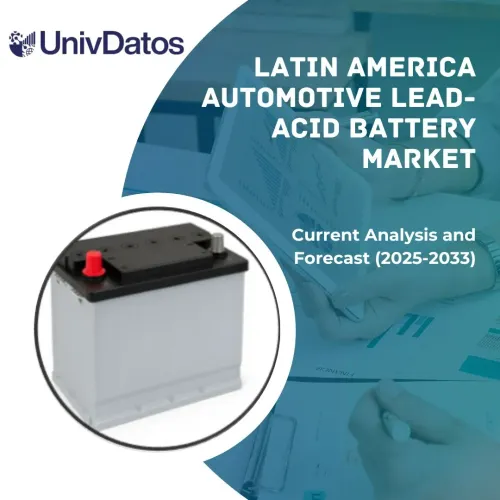- Home
- About Us
- Industry
- Services
- Reading
- Contact Us
Automotive PTC Heater Market: Current Analysis and Forecast (2025-2033)
Emphasis On Product (Air-Based, Water-Based), By Structure (Fin, Honeycomb), By Sales Channel (OEM, Aftermarket), By Vehicle Type (Internal Combustion Engine, Electric), and Region/Country
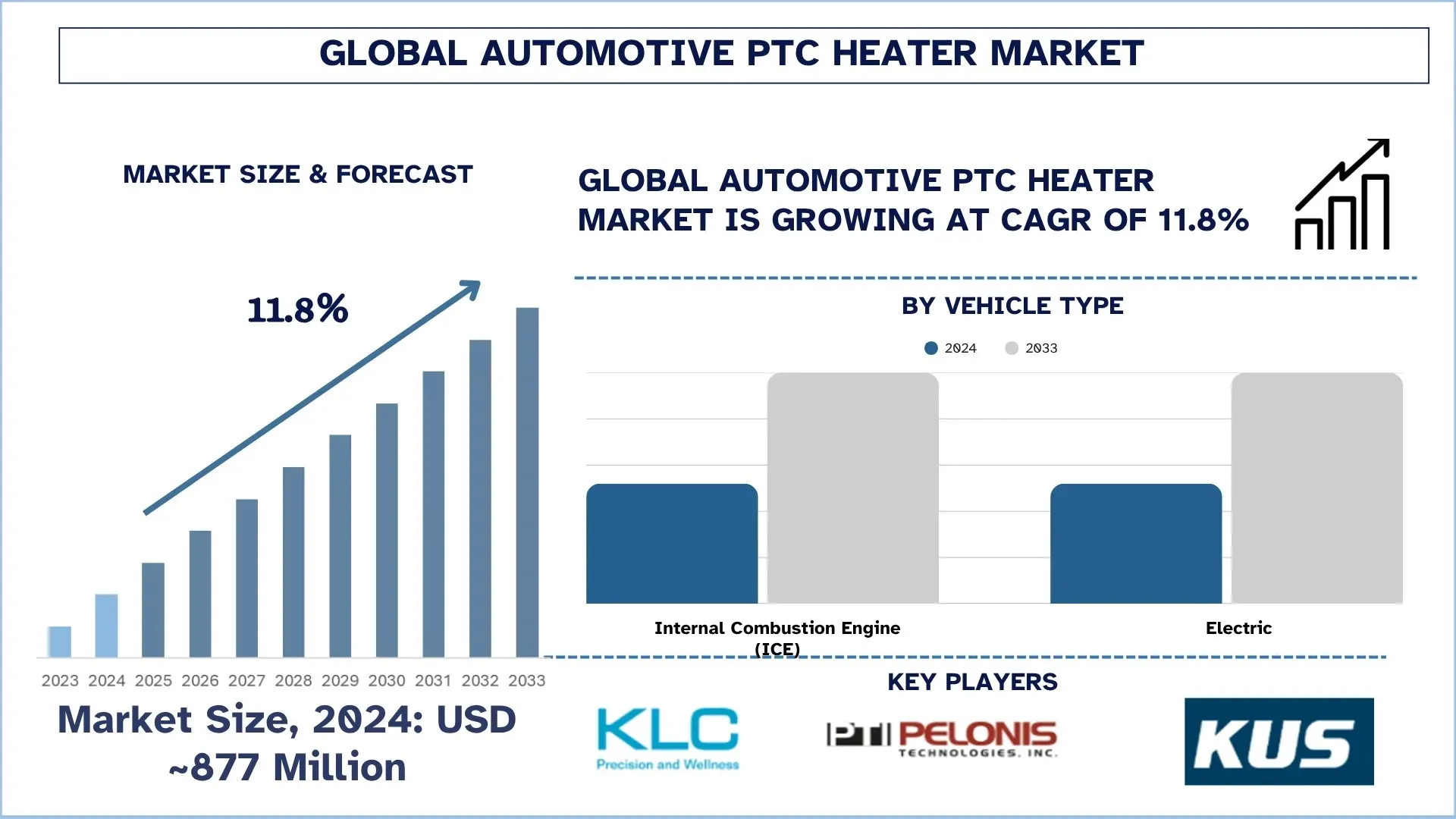
Global Automotive PTC Heater Market Size & Forecast
The global Automotive PTC Heater market was valued at USD 887 million in 2024 and is expected to grow to a strong CAGR of around 11.8% during the forecast period (2025-2033F), owing to the rising focus on enhancing customer convenience and comfort with added features.
Automotive PTC Heater Market Analysis
The automotive PTC heater market has exhibited notable market growth during historical years. Some of the key factors that have assisted its market growth are increasing sales of automobiles, rising urbanization in cold areas, rampant electric vehicle sales, a sizeable number of companies offering PTC heaters in their top models, etc. With the rising number of automobiles both in commercial and passenger vehicle segments, the customers are getting more aware of premium features such as air purification, heaters, automotive climate control, ADAS, etc. Considering these factors, a wide number of companies have started inculcating these added premium features in their updated and existing models with minor changes.
Figure 1: Automotive Sales (Commercial & Passenger) Rise in the Cold Climatic Countries, 2022-2024
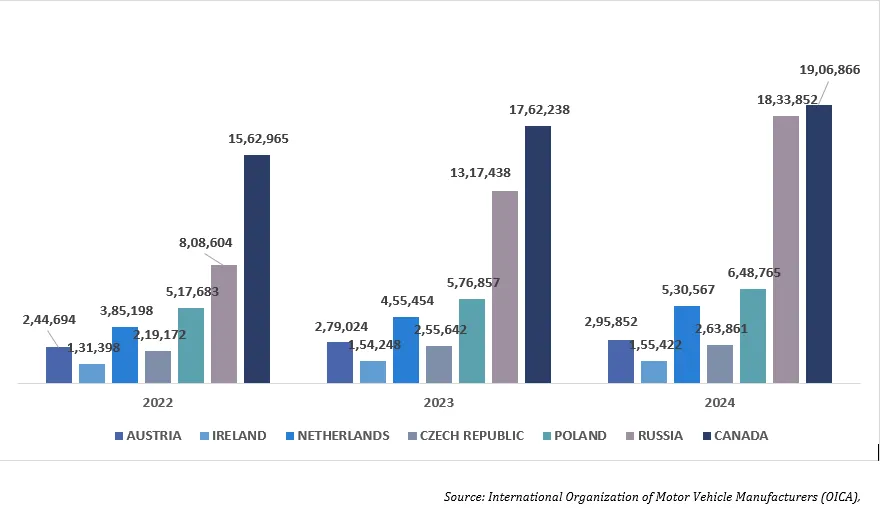
Global Automotive PTC Heater Market Trends
This section discusses the key market trends that are influencing the various segments of the global Automotive PTC Heater market, as found by our team of research experts.
Miniaturization of PTC Heater Components:
Miniaturization of PTC heater components is emerging as a key trend in the global automotive market, on account of space optimization, weight reduction, and energy efficiency. With the increasing compactness and complexity of electric car designs and hybrid electric vehicles (HEVs), the demand for small yet powerful thermal management solutions also rises. Miniaturized PTC heaters are better suited to integrate into cramped spaces within dashboards, HVACs, and battery compartments without any compromises on performance. These smaller units impart greater design freedom to automotive engineers and also allow for faster cabin warm-up and an overall more efficient system. The advancements in materials and manufacturing have promoted the ease of compacting the size of PTC heaters, providing robust solutions for cabin heating. Thus, with OEMs focusing more and more on space efficiency and lightweighting, PTC heaters become essential for next-gen vehicle platforms.
Automotive PTC Heater Industry Segmentation:
This section provides an analysis of the key trends in each segment of the global Automotive PTC Heater market report, along with forecasts at the global, regional, and country levels for 2025-2033.
Air-Based Category has shown promising growth in the Automotive PTC Heater Market.
Based on Product, the global automotive PTC heater market is bifurcated into air-based and water-based solutions. Of these, air-based PTC heaters have held a sizeable market share due to their shorter heating time, convenience to the occupants, etc. The air-based heaters have a fast-response time, which helps them to blow the air towards specific components, such as the windshield, for defrosting. The air-based PTC heaters are also extensively used in electric vehicles for cabin heating, defogging, and battery warming (especially in the colder climatic regions). Water-based PTC heaters heat a liquid (coolant), which is then circulated through the vehicle’s thermal system. This allows broader and more even heat distribution. The cooling from this type of system is relatively slower due to fluid heating, as well as having a more complex system to maintain. The systems are also expensive and are mostly found in high-end vehicles with premium pricing due to which limits the application is limited.
Honeycomb Category Dominates the Automotive PTC Heater Market.
Based on Structure, the market is segmented into fin and honeycomb. The honeycomb PTC section has been enjoying a significant chunk of the market share on account of greater thermal dissipation efficiency, compactness, and uniform distribution of temperature. Honeycomb structures heat up quicker and more evenly is an advantage that translates well in electric vehicles where fast warming of the cabin is essential. They are also designed to be as lightweight and energy-efficient as possible, thus allowing for greater vehicle range optimization. Going forward, the need for honeycomb PTC heaters is set to rise with increasing emphasis placed on the electrification of vehicles and passenger comfort by automotive manufacturers. This will provide a boost in innovation and adoption of the segment worldwide.
OEM Category Dominates the Automotive PTC Heater Market.
On the basis of sales channel, the market is bifurcated into OEM and aftermarket segments. Since the market is in its introductory stage, the OEM division grabbed a sizeable share in the early 2010s as PTC heaters began to be integrated into new electric and hybrid vehicle models. But as the adoption of these vehicles increases, the aftermarket segment is expected to grow fast. This will be due to replacement and upgrading needs, with a surge in consumer awareness of energy-efficient heating solutions, leading to a high CAGR during the forecast period.
Electric Category Dominates the Automotive PTC Heater Market.
Based on Vehicle Type, the market is segmented into Internal Combustion Engine (ICE) and Electric. Electric vehicles have gained a considerable market share and will experience some of the fastest growth rates over the forecast period. The growth is attributed largely to the global adoption of electric vehicles, which is also enhanced by emission regulations and environmental awareness. PTC heaters are critical for EVs since they offer efficient and fast heating without an input of heat from an engine, as in consequent drivetrain heating. As manufacturers concentrate on passenger comfort and thermal management systems, the demand for PTC heaters in electric vehicles is bound to vastly increase.
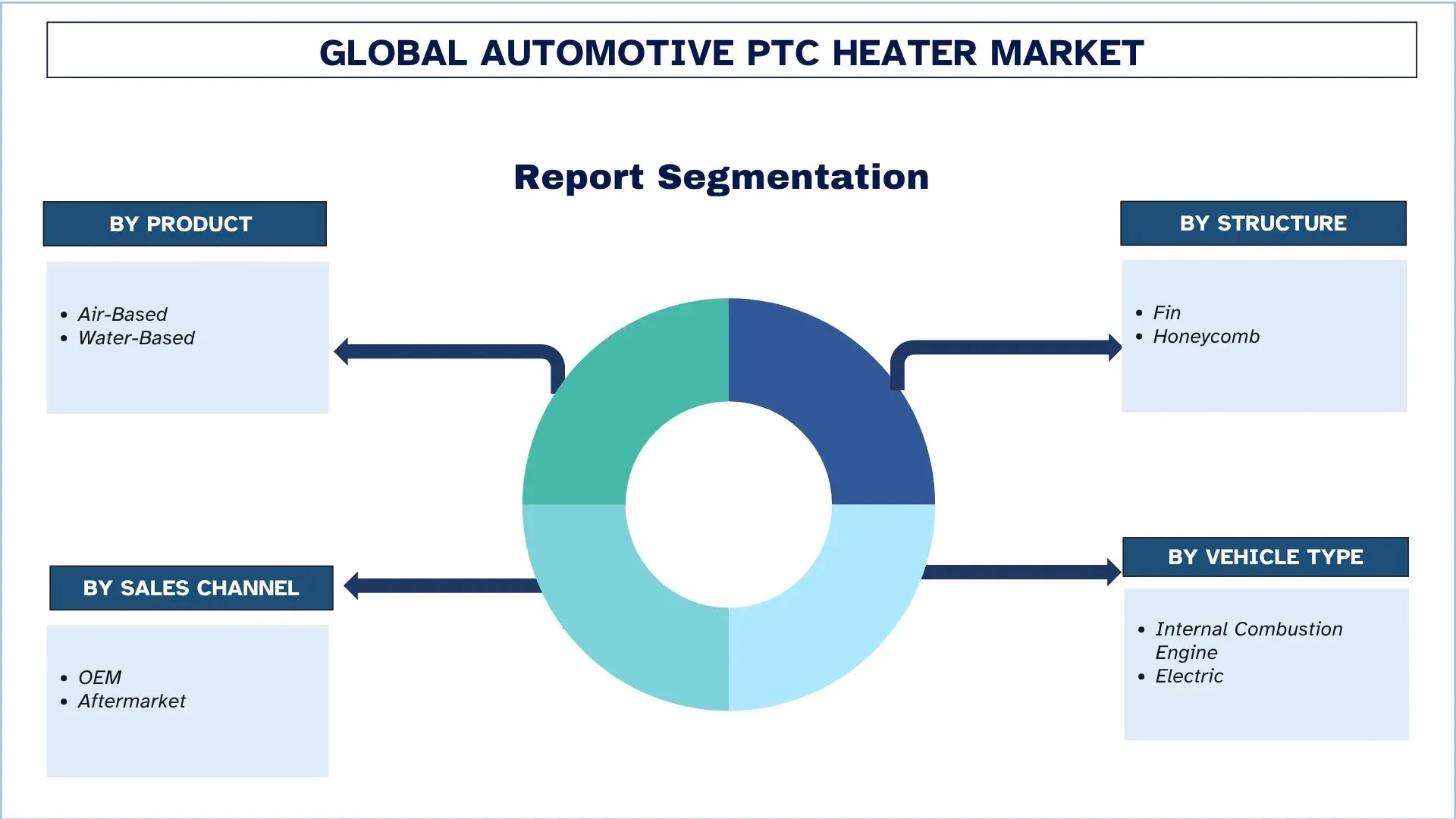
North America is expected to grow at a considerable rate during the forecast period.
The North American automotive industry of PTC heaters is growing steadily, along with the growing acceptance of the region for electric vehicles (EVs), hybrid electric vehicles (HEVs), and plug-in hybrid electric vehicles (PHEVs). PTC heaters play an important role in EVs mainly because the heating cabin lacks residual heat from a conventional internal combustion engine. Being self-regulating ceramic heating systems, these operate well for fast, energy-efficient heating in the cold climate of North America, mainly in Canada and the northern parts of the U.S.
The demand is further supported by regulations promoting zero-emission vehicles and government incentives. In addition, consumer impatience for quicker cabin heating and defrosting of windshields instigates automakers to implement the most advanced PTC heating system. The presence of major EV manufacturers such as Tesla and the growing investments in electric battery platforms from Ford, GM, and Rivian are raising OEMs towards integrating PTC solutions.
Innovation toward compact design and vehicle climate control system integration creates supplier opportunities. However, a challenge of high capital cost and competition from heat pump systems continues to hold back the market. Regardless, North America is highly supported in continuing its growth due to strong infrastructure and innovation, and thus the accelerating movement into electrified mobility.
The U.S. held a sizeable share of the Asia-Pacific Automotive PTC Heater market in 2024.
The U.S. PTC automotive heater market is evolving at a faster rate, driven by increasing electric and hybrid vehicle penetration. Electric and hybrid vehicles do not use engine heat for warming the cabin. Thus, PTC heaters provide efficient, fast, and self-regulating heat. Cabin heating is truly required in colder North American regions. Government incentives on EVs and rapidly growing consumer demand for quick defrosting and comfort urge OEMs to provide advanced thermal systems in vehicles. PTC technology has recently been seen with several OEMs such as Tesla, Ford, and GM for use with their new EV platforms. While there exists competition from heat pump systems, innovations, regulations, and a very strong electric vehicle ecosystem keep the market in the U.S. strong.
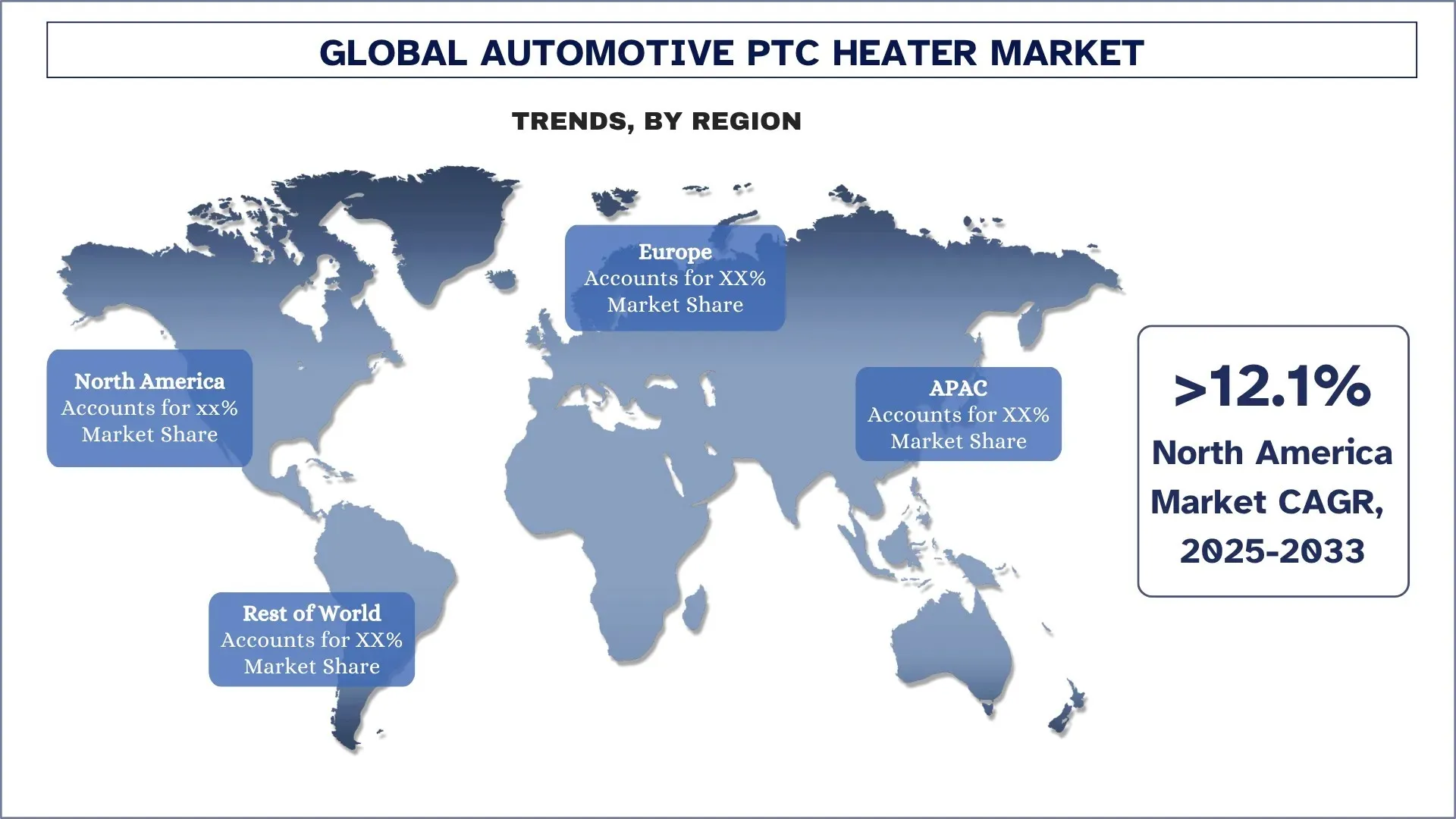
Automotive PTC Heater Industry Competitive Landscape:
The global Automotive PTC Heater market is competitive, with several global and international market players. The key players are adopting different growth strategies to enhance their market presence, such as partnerships, agreements, collaborations, new product launches, geographical expansions, and mergers and acquisitions.
Top Automotive PTC Heater Companies
Some of the major players in the market are KLC Corporation, Eberspächer, KUS, Caliente, Pelonis Technologies, ROHM Co., Ltd., BorgWarner, Shanghai PAKE Thermistor Ceramics Co., Ltd., Infineon Technologies AG, and Skyworks Solutions, Inc.
Recent Developments in the Automotive PTC Heater Market
- According to the International Organization of Motor Vehicle Manufacturers (OICA), the total sales of all types of vehicles (including commercial and passenger) were 79,668,636 in the year 2020, which increased to 95,314,731 in 2024.
- In 2021, Eberspacher announced the launch of a new PTC heater, which is 20% smaller and efficient as compared to its old heaters. The heater also has a thermal efficiency of around 95%.
Global Automotive PTC Heater Market Report Coverage
Report Attribute | Details |
Base year | 2024 |
Forecast period | 2025-2033 |
Growth momentum | Accelerate at a CAGR of 11.8% |
Market size 2024 | USD 877 Million |
Regional analysis | North America, Europe, APAC, Rest of the World |
Major contributing region | North America is expected to dominate the market during the forecast period. |
Key countries covered | U.S., Canada, Germany, U.K., Spain, Italy, France, China, Japan, South Korea, and India |
Companies profiled | KLC Corporation, Eberspächer, KUS, Caliente, Pelonis Technologies, ROHM Co., Ltd., BorgWarner, Shanghai PAKE Thermistor Ceramics Co., Ltd., Infineon Technologies AG, and Skyworks Solutions, Inc. |
Report Scope | Market Trends, Drivers, and Restraints; Revenue Estimation and Forecast; Segmentation Analysis; Demand and Supply Side Analysis; Competitive Landscape; Company Profiling |
Segments Covered | By Product, By Structure, By Sales Channel, By Vehicle Type, By Region/Country |
Reasons to Buy the Automotive PTC Heater Market Report:
- The study includes market sizing and forecasting analysis confirmed by authenticated key industry experts.
- The report briefly reviews overall industry performance at a glance.
- The report covers an in-depth analysis of prominent industry peers, primarily focusing on key business financials, type portfolios, expansion strategies, and recent developments.
- Detailed examination of drivers, restraints, key trends, and opportunities prevailing in the industry.
- The study comprehensively covers the market across different segments.
- Deep dive regional-level analysis of the industry.
Customization Options:
The global Automotive PTC Heater market can further be customized as per the requirements or any other market segment. Besides this, UnivDatos understands that you may have your own business needs; hence, feel free to contact us to get a report that completely suits your requirements.
Table of Content
Research Methodology for the Global Automotive PTC Heater Market Analysis (2023-2033)
We analyzed the historical market, estimated the current market, and forecasted the future market of the global Automotive PTC Heater market to assess its application in major regions worldwide. We conducted exhaustive secondary research to gather historical market data and estimate the current market size. To validate these insights, we carefully reviewed numerous findings and assumptions. Additionally, we conducted in-depth primary interviews with industry experts across the Automotive PTC Heater value chain. After validating market figures through these interviews, we used both top-down and bottom-up approaches to forecast the overall market size. We then employed market breakdown and data triangulation methods to estimate and analyze the market size of industry segments and sub-segments.
Market Engineering
We employed the data triangulation technique to finalize the overall market estimation and derive precise statistical numbers for each segment and sub-segment of the global Automotive PTC Heater market. We split the data into several segments and sub-segments by analyzing various parameters and trends, by Product, By Structure, By Sales Channel, By Vehicle Type, and by Regions within the global Automotive PTC Heater market.
The Main Objective of the Global Automotive PTC Heater Market Study
The study identifies current and future trends in the global Automotive PTC Heater market, providing strategic insights for investors. It highlights regional market attractiveness, enabling industry participants to tap into untapped markets and gain a first-mover advantage. Other quantitative goals of the studies include:
Market Size Analysis: Assess the current forecast and market size of the global Automotive PTC Heater market and its segments in terms of value (USD).
Automotive PTC Heater Market Segmentation: Segments in the study include areas by Product, By Structure, By Sales Channel, By Vehicle Type, and by
Regulatory Framework & Value Chain Analysis: Examine the regulatory framework, value chain, customer behavior, and competitive landscape of the Automotive PTC Heater industry.
Regional Analysis: Conduct a detailed regional analysis for key areas such as Asia Pacific, Europe, North America, and the Rest of the World.
Company Profiles & Growth Strategies: Company profiles of the Automotive PTC Heater market and the growth strategies adopted by the market players to sustain the fast-growing market.
Frequently Asked Questions FAQs
Q1: What is the global Automotive PTC Heater market’s current market size and growth potential?
The global Automotive PTC Heater market was valued at USD 877 million in 2024 and is expected to grow at a CAGR of 11.8% during the forecast period (2025-2033).
Q2: Which segment has the largest share of the global Automotive PTC Heater market by Product?
The Air-Based segment led the market in 2024. The air-based PTC heaters have held a sizeable market share due to their shorter heating time, convenience to the occupants, etc.
Q3: What are the driving factors for the growth of the global Automotive PTC Heater market?
• Growing Demand for Defrost and Demist Functions: The rising emphasis on vehicle safety and visibility, especially in less temperate zones, has put the demand for defrost-misting functions in automotive systems. Thunder PTC heaters clear frost, fog, and condensation on windshields and windows quickly for visibility to the driver. PTC heaters are thereby integrated into electrical and internal combustion engine vehicles with an increased value on safety by end consumers.
• Rapid Urbanization in Cold-Climate Regions: The fastest pace of urbanization in cold-weather continental North America, Europe, and East Asia is reinforcing the growth of heating system requirements in cars. Since the urban population depends extensively on private and public transport, fast heating of the car's interior and windshield defogger becomes imperative during the long winters. PTC heaters fit perfectly in this situation as they react very fast and consume less energy.
Q4: What are the emerging technologies and trends in the global Automotive PTC Heater market?
• Miniaturization of PTC Heater Components: Miniaturization of PTC heater components is emerging as a key trend in the global automotive market, on account of space optimization, weight reduction, and energy efficiency.
• Rise of Dual-Function Systems (Heating + Air Purification): Dual-purpose systems that combine cabin heating with air purification are becoming a considerable trend in the PTC automotive heater market. As customers better understand the in-vehicle air quality, especially in urban areas filled with pollution, automakers are now looking at providing features that give thermal comfort and healthy air quality to the occupants.
Q5: What are the key challenges in the global Automotive PTC Heater market?
• High Initial Costs: Automotive PTC heaters involve high upfront investment due to the use of advanced materials and manufacturing precision, which limit adoption, particularly in cost-sensitive vehicle segments and emerging markets. Despite long-term efficiency benefits, the initial cost discourages manufacturers and consumers from choosing PTC systems over cheaper traditional or resistive heating alternatives in competitive automotive sectors.
• Competition from Alternative Heating Technologies: Emerging technologies like heat pumps and infrared heaters challenge PTC heaters by offering comparable or better energy efficiency, especially in electric vehicles targeting reduced energy consumption and longer driving ranges. As these alternatives become more cost-effective and technically advanced, PTC heater manufacturers face pressure to innovate or risk losing market share to increasingly attractive thermal management solutions.
Q6: Which region dominates the global Automotive PTC Heater market?
The North America region dominates the global Automotive PTC Heater market due to the rising demand for automobiles, both in the passenger and commercial segments.
Q7: Who are the key players in the global Automotive PTC Heater market?
Some of the top Automotive PTC Heater companies include:
• KLC Corporation
• Eberspächer
• KUS
• Caliente
• Pelonis Technologies
• ROHM Co., Ltd.
• BorgWarner
• Shanghai PAKE Thermistor Ceramics Co., Ltd.
• Infineon Technologies AG
• Skyworks Solutions, Inc
Q8: What opportunities does the report provide for companies aiming to align with government sustainability goals?
The report outlines how global policies targeting automotive emissions and energy efficiency create opportunities for PTC heater manufacturers to align with green mobility goals and regulatory compliance frameworks. It highlights incentives for electric vehicle adoption, government-backed R&D funding for energy-efficient thermal systems, and climate action plans that encourage the shift to eco-friendly automotive components. By analyzing initiatives in regions such as the EU, China, and North America, the report helps companies position PTC heater solutions as compliant, future-ready technologies. This alignment boosts ESG credentials and unlocks participation in sustainability-driven procurement, grants, and preferential supplier programs.
Q9: How can stakeholders navigate technological advancements in the Automotive PTC Heater market?
Stakeholders can stay ahead by tracking developments in smart heating controls, integration with EV battery systems, and the shift toward compact, energy-efficient designs tailored for electric and hybrid vehicles. Focusing on innovations such as self-regulating materials, faster response times, and compatibility with renewable energy platforms helps ensure competitiveness in an evolving thermal management landscape.
Related Reports
Customers who bought this item also bought

